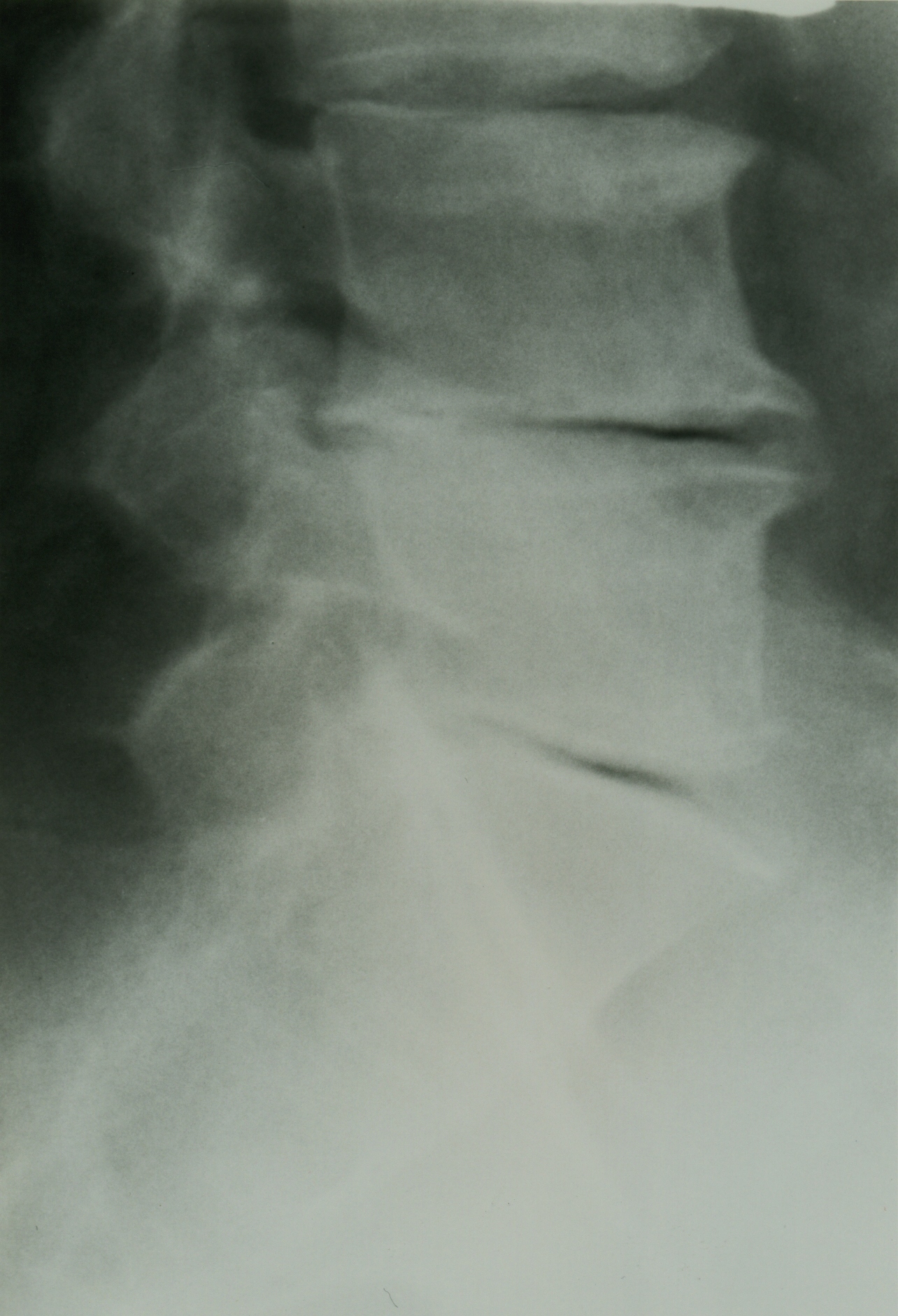by Terry R. Yochum, D.C., D.A.C.B.R., Fellow, A.C.C.R., and Chad J. Maola, D.C.
History:
An adult male patient with a long history of low back pain.
Discussion:
The vacuum sign (of Knutts en) is an important early radiographic finding. Essentially, this represents collections of nitrogen gas in nuclear and annular fissures and presents as an area of linear radiolucency in the disc space.1 Studies have show n this to be a comm on sign of disc aging and degeneration, with an incidence of 2-3% in the general population.1 The collection of nitrogen in the discal fiss ures is th ought to originate from adjacent extracellular fluid.
In movements of the spine that produce a low ered pressur e in the disc, such as in extension, n itrogen is released from the adjacent extracellular fluid and, owing to the pressure gradient, accumulates in the discal fissures. On MRI the disc shows diminished signal intensity owing to deh ydration and a si gnal void at the vacuum site. This collection of gas can be made to disappear with spinal flexion and reappear with spinal extension. Disc infections do no demonstrate this sign owing to fluid collections in the fissures. Central v acuum phenomena correspond to fissuring of the nucleus pulposus, whereas peripheral lesions represent rim lesions in which the annulus fibrosus has been disrupted from its attachment to the vertebral body margin.1
peripheral lesions represent rim lesions in which the annulus fibrosus has been disrupted from its attachment to the vertebral body margin.1
In the peripheral joints, especially the hip, shoulder, and knee, a vacuum sign does not denote degenerative joint changes. The vacuum sign is produced as an accompanying physiological phenomenon usually induced by the position of the patient in a position of traction when the exposure was made. Gas in the symphysis pubis is a normal finding during pregnancy and up to 3 weeks postpartum and may be seen as a vertical, thin radiolucency.1
Figure 1. Diagnosis: Vacuum sign of Knuttsen with discogenic spondylosis
 Dr. Terry R. Yochum is a second generation chiropractor and a Cum Laude Graduate of National College of Chiropractic, where he subsequently completed his radiology residency. He is currently Director of the Rocky Mountain Chiropractic Radiological Cent er in Den ver, Colorado, and Adjunct Professor of Radiology at the Southern California University of Health Sciences, as well as an instructor of skel etal radiology at the University of Colorado School of Medicine, Denver, CO. Dr. Yochum can be reached at 1-303-940-9400 or by e-mail at [email protected].
Dr. Terry R. Yochum is a second generation chiropractor and a Cum Laude Graduate of National College of Chiropractic, where he subsequently completed his radiology residency. He is currently Director of the Rocky Mountain Chiropractic Radiological Cent er in Den ver, Colorado, and Adjunct Professor of Radiology at the Southern California University of Health Sciences, as well as an instructor of skel etal radiology at the University of Colorado School of Medicine, Denver, CO. Dr. Yochum can be reached at 1-303-940-9400 or by e-mail at [email protected].

Dr. Chad Maola is a 1990 Magna Cum Laude Graduate of National College of Chiropractic. Dr. Maola is available for post-graduate seminars. He may be reached at 1-727-433-0153 or by email at [email protected].
Reference
1. Yochum TR, Rowe LJ: Essentials of Skeletal Radiology, 3rd ed., Williams & Wilkins, Baltimore, Maryland, 2005.
